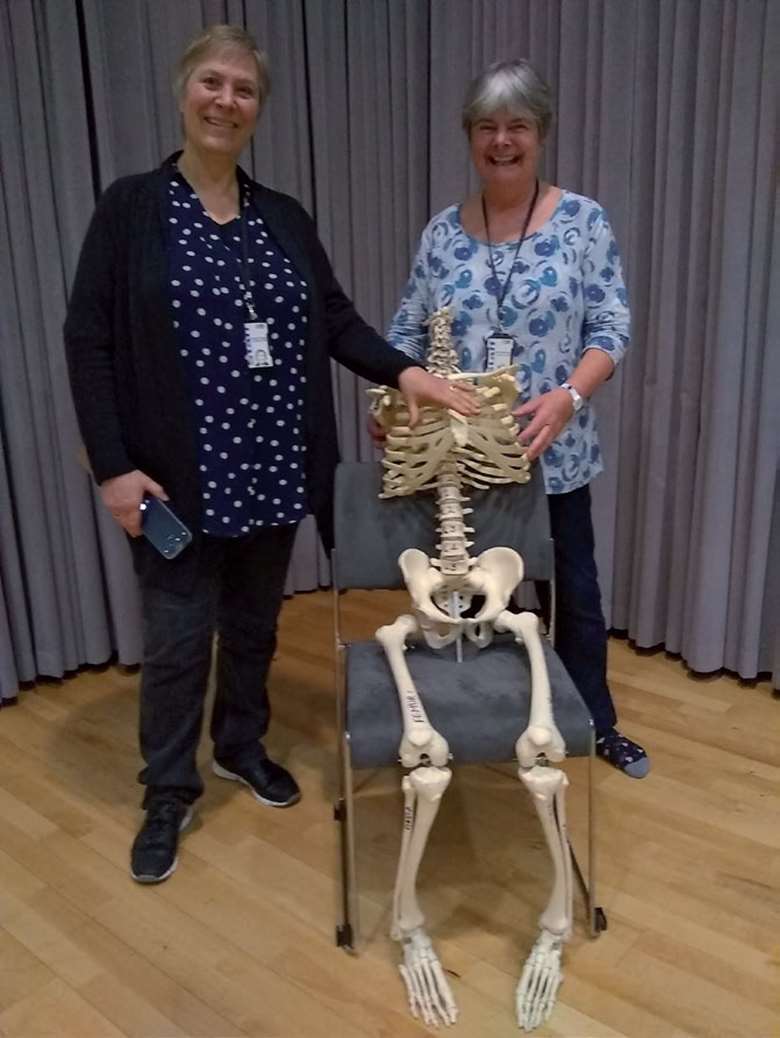The body of the music: Guildhall's body mapping course
Clarissa Payne
Wednesday, May 1, 2019
Over a weekend in April, Clarissa Payne joined the body mapping course at Guildhall School of Music and Drama, one of its range of short courses and summer schools that are aimed at musicians. How did she get on?

Do you have shoulders? What is a waist? Where do your arms begin? How big are your shoulder blades? How much does your head weigh? How many jaws do you have?
I'd never asked myself these questions, much less attempted to answer them. Did I really know how my own body worked?
Doing the asking were Sarah Newbold and Philippa Davies, leaders of a body mapping course, held at the Guildhall School of Music and Drama and attended by a group of performers and teachers. Guildhall students now also take a ten-week course in body mapping. ‘They sit very differently at the end of the course than at the beginning!’ says Davies.
Body mapping's creators Barbara and William Conable defined it as ‘the conscious correcting and refining of one's body map to produce efficient, graceful, co-ordinated movement.’ Body mapping teachers are known as Andover Educators.
Davies has performed and recorded solo with the world's leading orchestras and ensembles, and Newbold is a member of the Academy of St Martin in-the-Fields and the New London Orchestra. She is also formerly of Welsh National Opera and the London Philharmonic.
Newbold and Davies teach conservatoire students and came to realise that Davies’ students showed distinct similarities in movement, and Newbold's shared another set of movements. They wanted to find out more and began to explore the Conable's ideas, qualifying as Andover Educators in 2014.
The course
‘What do musicians do?’ Newbold asks. We play, perform, practise, teach, were the obvious suggestions from the group. She introduces the central theme of the course: ‘We move. Musicians are movers’.
We warm up by getting into fours, one of us mirroring the movements of the person directly opposite, while repeating phrases sung by the person on our right and answering maths questions from the person on our left. We plunge into a vivid experience of processing and responding to different sensory information.
Newbold then expands on ‘inclusive awareness’, allowing ourselves to notice what is around us using our sight, smell, taste, hearing, touch – and our kinaesthetic sense, our perception of movement, not just around us but inside us. A sense that musicians will often neglect if they are able to hear and see.
As we begin to think about balance, Newbold sets a five-litre container of water on the floor, labelled ‘THIS IS THE WEIGHT OF YOUR HEAD’. We pass it around, amazed that we all bear that load. Newbold then demonstrates the role of the spine in weight delivery, stressing again that a body is made of moving parts.
An entire model skeleton emerges from a bag, along with a collection of individual bones, joints, and other oddities. The second day's sessions on arms and legs challenge our perceptions about where our joints are and how they move – the bag provides pipe lagging to put in our armpits and masking tape to stick along our arms.
An important idea for teachers is ‘translation’. Davies lists ‘phrases of untruth’ commonly used in teaching breathing. Wind players will recognise ‘support from the diaphragm’ and ‘open the throat’ – but there are no sensory receptors in the diaphragm and the throat is always open. What is really meant, and how do we expect a student to understand and apply that meaning?
‘We experience a physical sensation before we intellectually understand it’, says Newbold. ‘I find ways for the students to discover the sensation for themselves.’ Threaded throughout the course are small group sessions working with our instruments and giving each other feedback. I work with Rachel Misson, flute teacher at Warwick School, and Aisling Casey, a principal oboist of the Netherlands Radio Philharmonic Orchestra and teacher at the Amsterdam Conservatorium, who is also training to be an Andover Educator. Newbold asks us to simultaneously play and walk backward or forward, while imagining the space in front and behind changing size. A dramatic change in sound results – and we also learn about enabling someone else to experience a physical sensation.
Just like the body itself, the ways in which we apply Body mapping ideas to teaching can move and change. The importance of enjoyment – of playing, of letting air come into your body – repeatedly arise and I make a mental list of things I'm planning to play with in my own practice. Indeed, we're all excited by our new awareness.
‘My own playing has massively developed and become more expressive’, says Newbold, and Casey agrees: ‘You become a better teacher and therefore a better player.’

